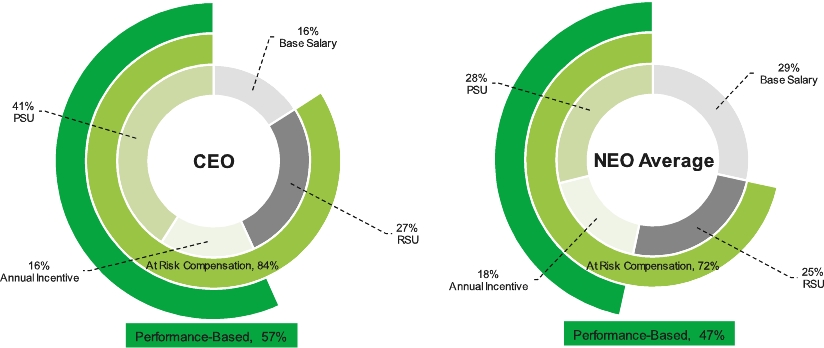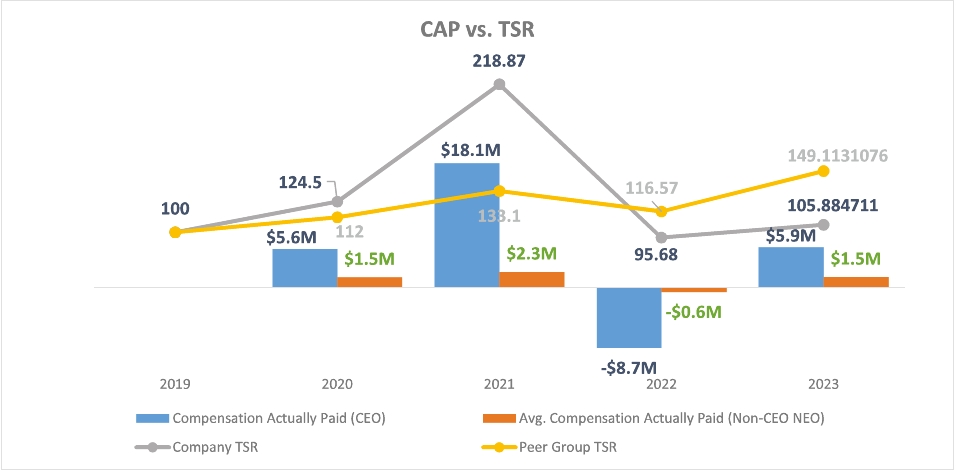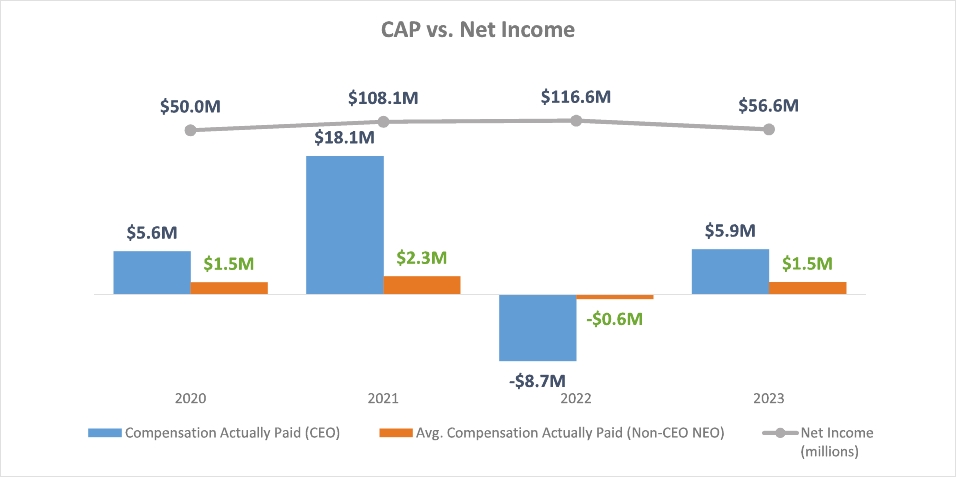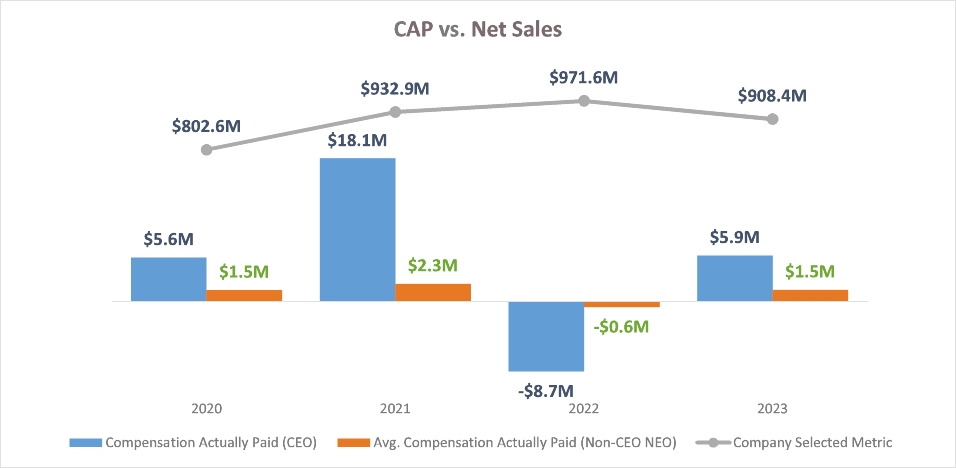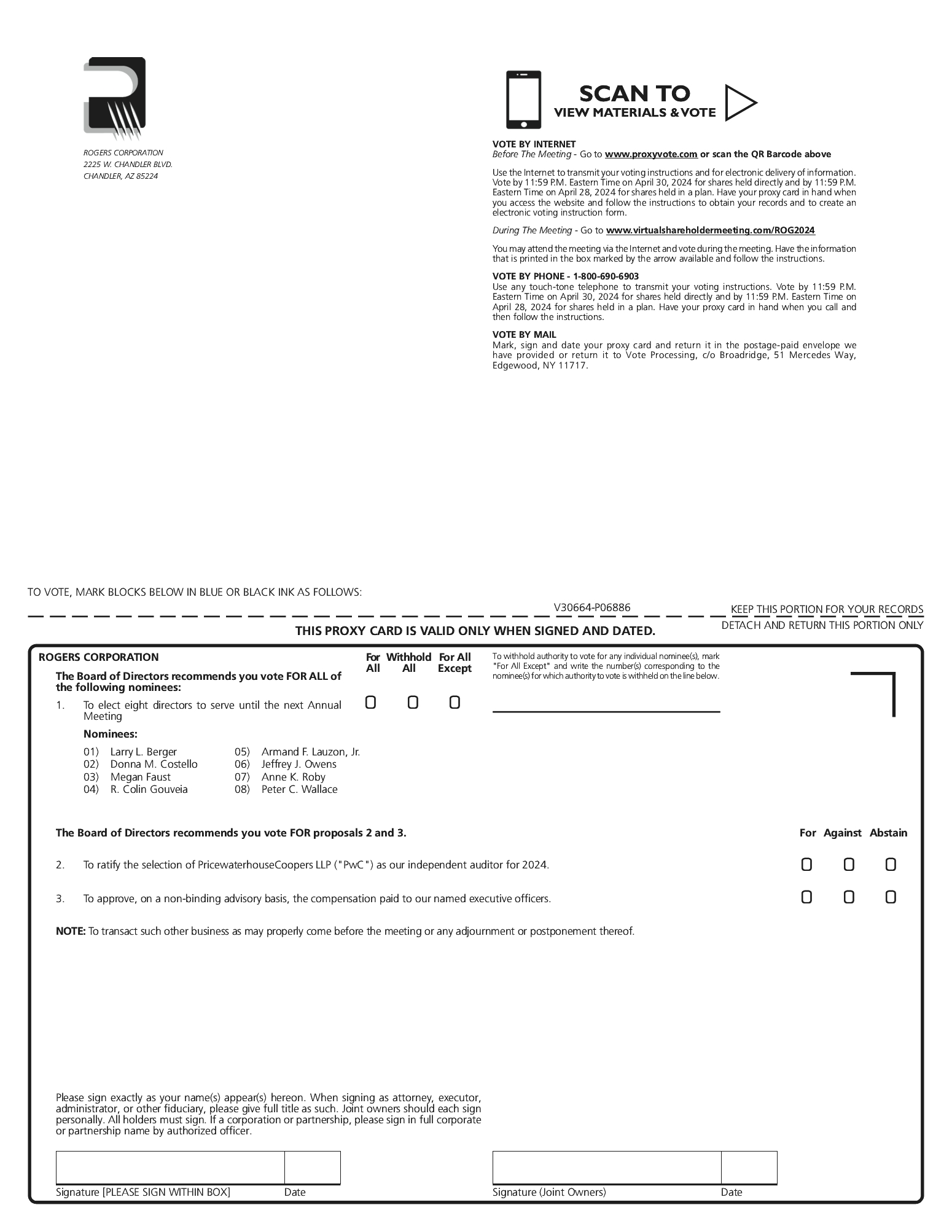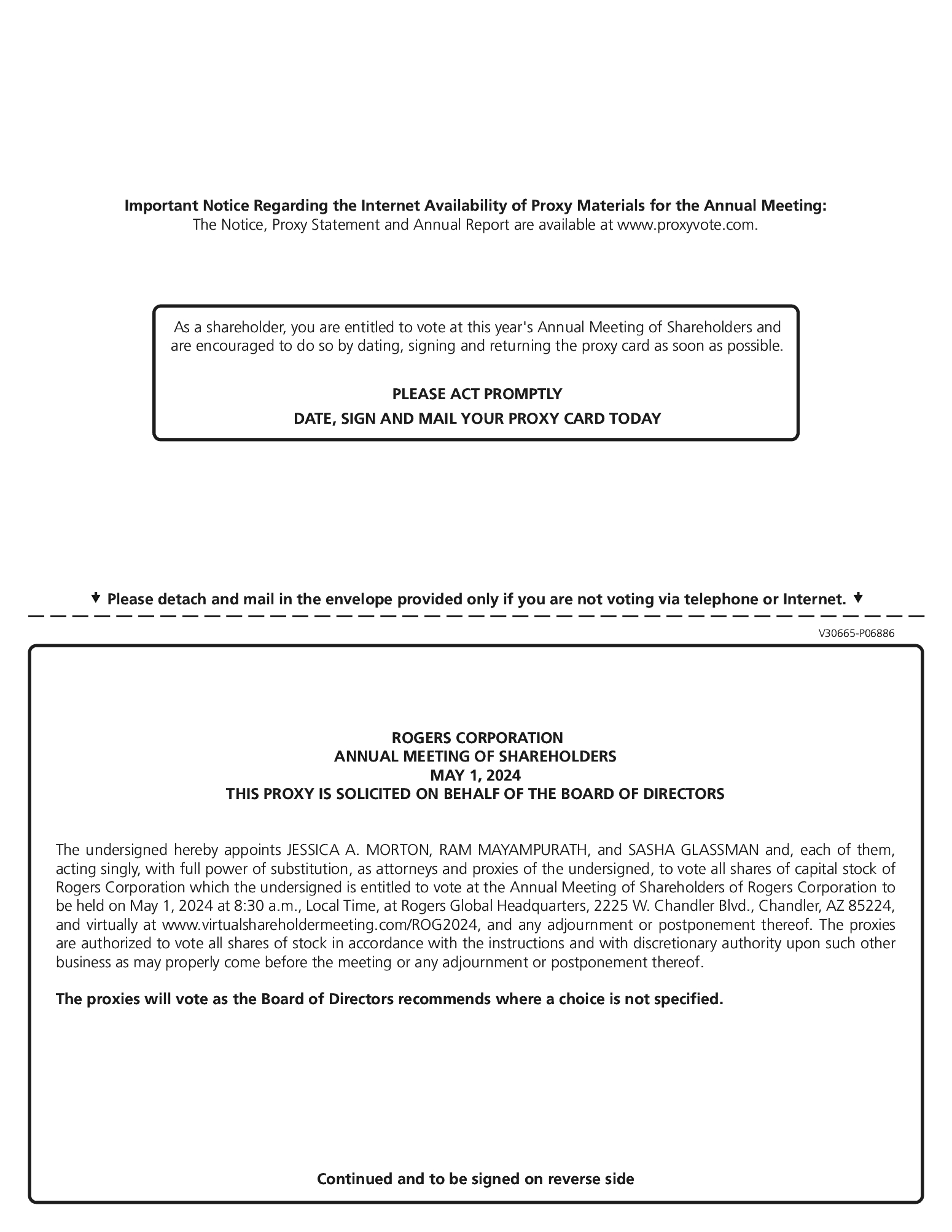How do I vote shares held under my name?
If you are a shareholder of record, you may instruct the Company on how to vote your shares by:
• | using the Internet voting site listed on the proxy card or Notice; |
• | using the toll-free telephone number listed on the proxy card; or |
• | marking, signing, dating, and returning the proxy card by mail. |
You may also attend the meeting virtually or in person and vote your shares during the meeting.
How do I vote shares not held under my name?
If your shares are held in street name by a nominee, the Notice or proxy materials, as applicable, are being forwarded to you by that organization and you should follow the instructions for voting as set forth on that organization’s voting instruction card. Shares held in employees’ or former employees’ 401(k) plans may be voted in a similar manner.
Under the rules and practices of the NYSE, if you hold shares through a nominee, your nominee is permitted to vote your shares on certain “routine” matters in its discretion even if the nominee does not receive instructions from you. The proposal to ratify the appointment of PwC is considered a “routine” matter, and your nominee will have discretionary authority to vote your shares if you do not provide instructions as to how your shares should be voted on this proposal. The proposals to elect directors and to approve, on an advisory basis, the compensation of our NEOs are “non-routine” matters. The absence of voting instructions from you to your nominee on these “non-routine” matters will result in a “broker non-vote” because the nominee does not have discretionary voting power for those proposals. “Broker non-votes” and “withhold” votes do not constitute votes properly cast favoring or opposing proposals on “non-routine” matters.
How do I vote shares that I hold through the Company’s Employee Stock Purchase Plan (“ESPP”)?
Shares owned by employees or former employees as a result of participation in the ESPP may, to the extent such shares are held in the name of the employee or former employee, be voted as set forth in “How do I vote shares held under my name?”. Shares purchased under the ESPP but held in street name by a nominee must be voted in accordance with the instructions for voting in “How do I vote shares not held under my name?”.
How many holders of the Company’s outstanding shares must be present to hold the Annual Meeting of Shareholders?
In order to conduct business at the meeting, it is necessary to have a quorum. The presence, in person or by proxy, including virtually, of the holders of a majority of the shares of capital stock entitled to vote on a matter at the meeting constitutes a quorum with respect to that matter. “Broker non-votes” and abstentions will be considered present for the purpose of establishing a quorum.
How will my shares be voted if I complete and return my proxy card?
Whichever method you use to transmit your instructions, your shares of Rogers’ capital stock will be voted as you direct. With respect to shares held of record under your name, if you sign and return the enclosed proxy card or otherwise designate the proxies named on the proxy card to vote on your behalf, but do not specify how to vote your shares, your shares will be voted:
• | FOR the election of the nominees for director |
• | FOR the ratification of the appointment of PwC as the Company’s independent accounting firm for 2024 |
• | FOR the advisory vote to approve the 2023 compensation of our NEOs |
• | In accordance with the judgment of the persons voting the proxy on any other matter properly brought before the meeting, if any such matters are properly raised at the meeting |
With respect to shares held in street name by a nominee, if you sign and return the nominee’s voting instruction card but do not specify how to vote your shares, your nominee will have discretionary authority to vote your shares on a “routine matter,” but your shares will not be voted on any “non-routine matter,” as more particularly described in “How do I vote shares not held under my name?”.
If I execute a proxy, may I still attend the Annual Meeting of Shareholders, either virtually or in person, to vote or choose to change or revoke my vote?
Execution of a proxy will not in any way affect your right to attend the meeting, either virtually or in person, and to vote.
Any shareholder submitting a proxy has the right to revoke it any time before it is exercised by filing a written revocation with the Corporate Secretary of Rogers, by executing a proxy with a later date, by voting again on a later date on the Internet or by telephone (only your latest Internet or telephone proxy submitted prior to the meeting will be counted), or by attending and voting at the meeting.
Who counts the votes?
Votes at the Annual Meeting of Shareholders will be tabulated by the inspectors of election appointed by the Company.
















